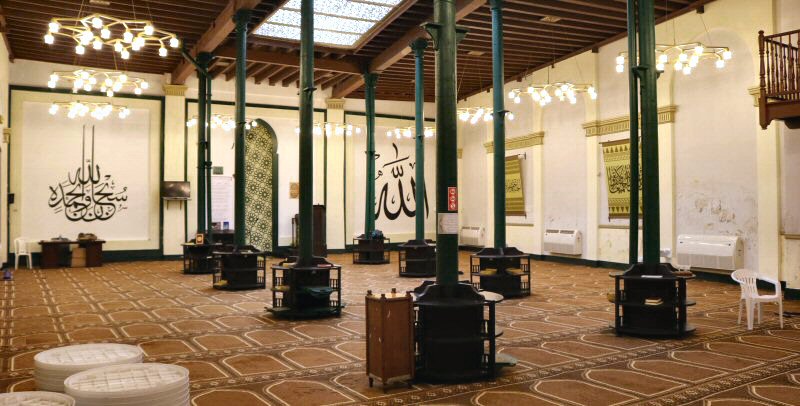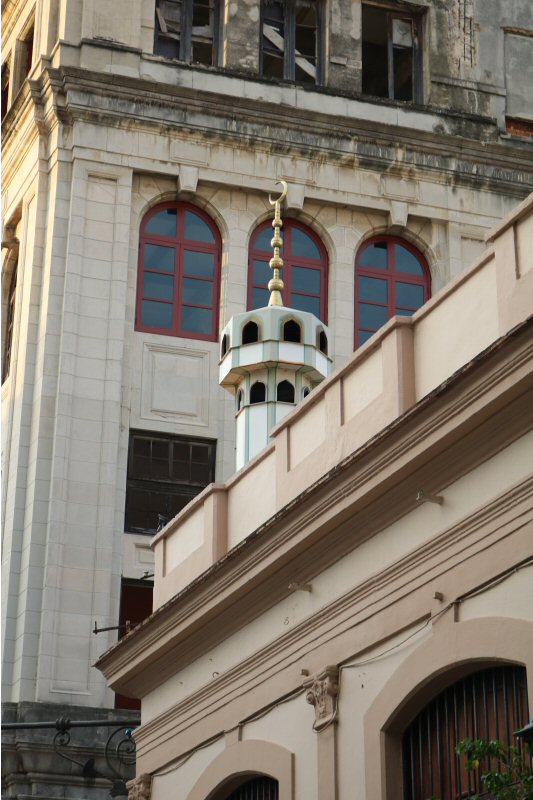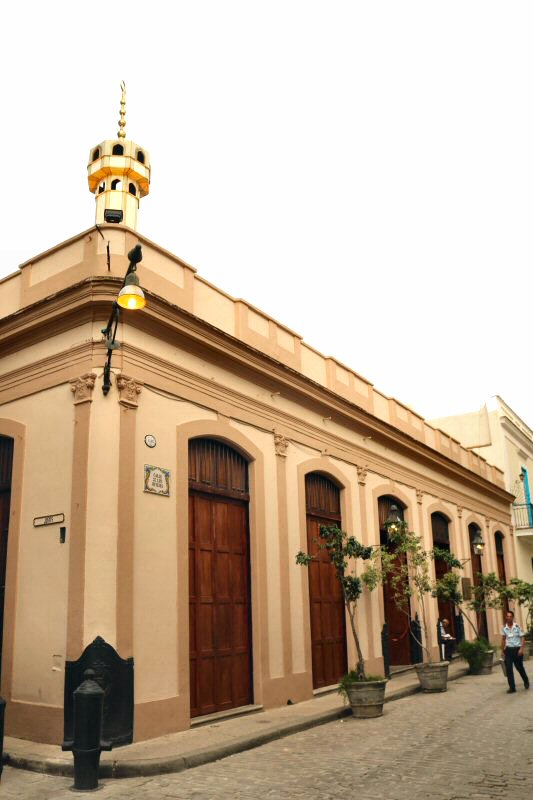It is estimated that about 10.000
Muslims (less than 0.1 % of the general population of the
island) live in Cuba, consisting of Muslim residents, students
and members of different missions of the Islamic countries.
Among the students (about 1.500-2.000 persons) the Pakistani
students constitute the biggest group.
Until 2015 the Muslims in Havana could
perform their ritual prayer only in their homes, as there was
not any mosque in the city, likewise in the country. They were
allowed to perform their ritual prayer in the Prayer Room of the
Casa de los Árabes (House of the Arabs), but only on Fridays. In
the other days of the week this place could be visited only as
part of the museum.
The visits of Sheikh Muhammad bin Nassir
Al-Aboudy, the Assistant Secretary-General of the Muslim World
League, and the members of the Humanitarian Aid Foundation (IHH)
in 2015, touched the heart of Fidel Castro who promised to build
a mosque in Havana. The first mosque of Cuba will be built by
the fund of Saudi Arabia in Havana. Turkey applied to construct
another mosque in Santiago de Cuba, but not in Havana, because
the Cuban authorities had already agreed on the project of Saudi
Arabia before.
In 17 July 2015, in the day of Ramadan, the first prayer room for Cuban Muslims, the Masjid (Mezquita Abdallah), that would be open to everyone for all daily prayers, was inaugurated in Havana. It was funded by the Turkish Religious Affairs Foundation.
The pink-white building that houses the
Masjid, has only one floor. It is not painted in green, as this
was usual in Islamic shrines. The minaret with the sherefe
(minaret balcony) stands on the left corner of the building. It
is shorter than the height of the second floor of the adjoining
building. It has an alem (the metal finial at the top of the
mosque) in copper with three globes and a hilal (crescent moon)
at the top that has a nice appearance when it is lightened at
night.
Inside of the building the ritual prayer
is performed on the brown carpet that covers all the ground of
the large hall. There are also plastic chairs in case of any
conference that will be held in the hall. The ceiling is
supported by several green columns with small book shelves at
their feet. There is a big frosted glass window at the ceiling,
so that the sun shine can lighten inside of the hall. The walls
are covered by excellent examples of large black calligraphy,
written in Arabic language. The mihrab is decorated by geometric
green flowers. The mihrab is the niche in front of which the
imam and the Muslims perform their ritual prayer.
The mihrab indicates the kiblah,
the direction of the Kaaba shrine in Mecca toward which all
Muslims turn in ritual prayer. There is not any minbar, as it is
usual in mosques, but the imam uses a high desk to make his
speech, the khutbah, about any religious or social topic after
the ritual. In the Masjid several copies of Koran, even in
Spanish, can be found.
The Masjid, unlike the Casa de los
Árabes, is open daily, and sounds the ezan (adhan; the Islamic
call to worship), recited by the muezzin (the religious staff
that calls the Muslims to prayer from the minaret) at prescribed
times of the day. On Fridays the Masjid is packed with Muslims,
mostly consisting of Arabs, North Africans and Pakistanis. After
the ritual hallal food is served. Hallal food means all food,
except the ones prohibited by the Koran or the Hadith, like
pork, alcoholic drinks, carnivarus animals etc. Hadith refers to
the record of words, actions, and the silent approval of the
Islamic prophet Muhammad.

The Masjid is located on the Oficios street #13, between the Justis and the Obrapia streets, 50 meters south to the Plaza de Armas.


